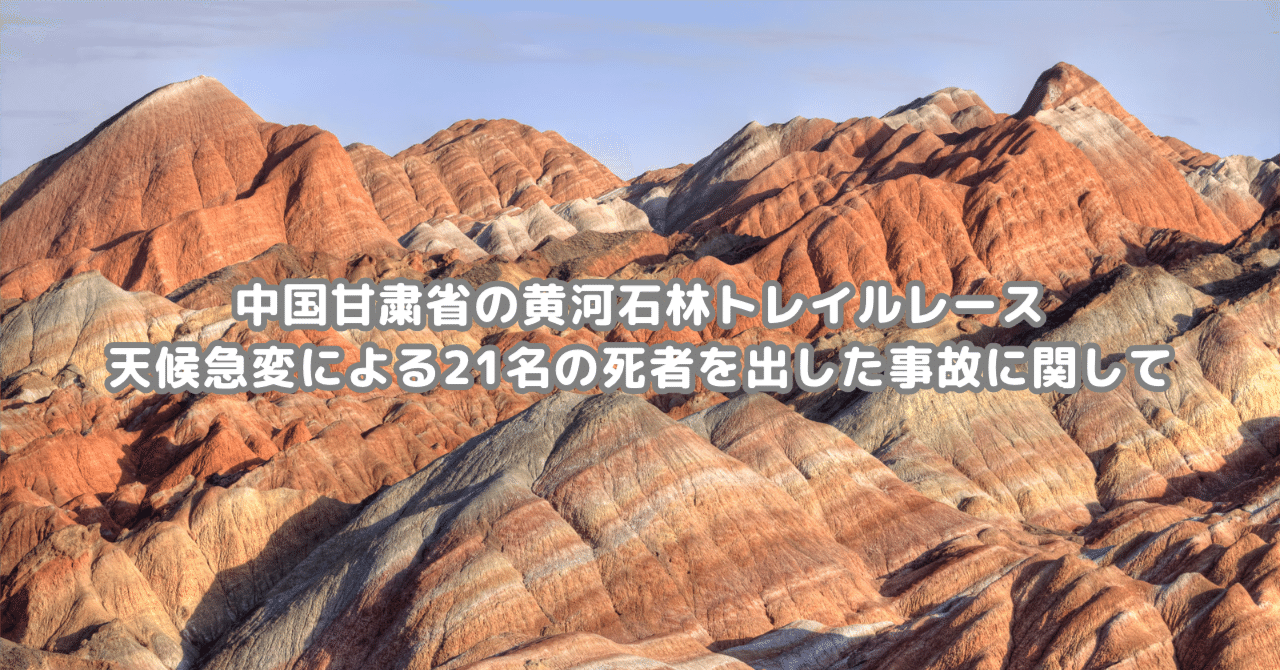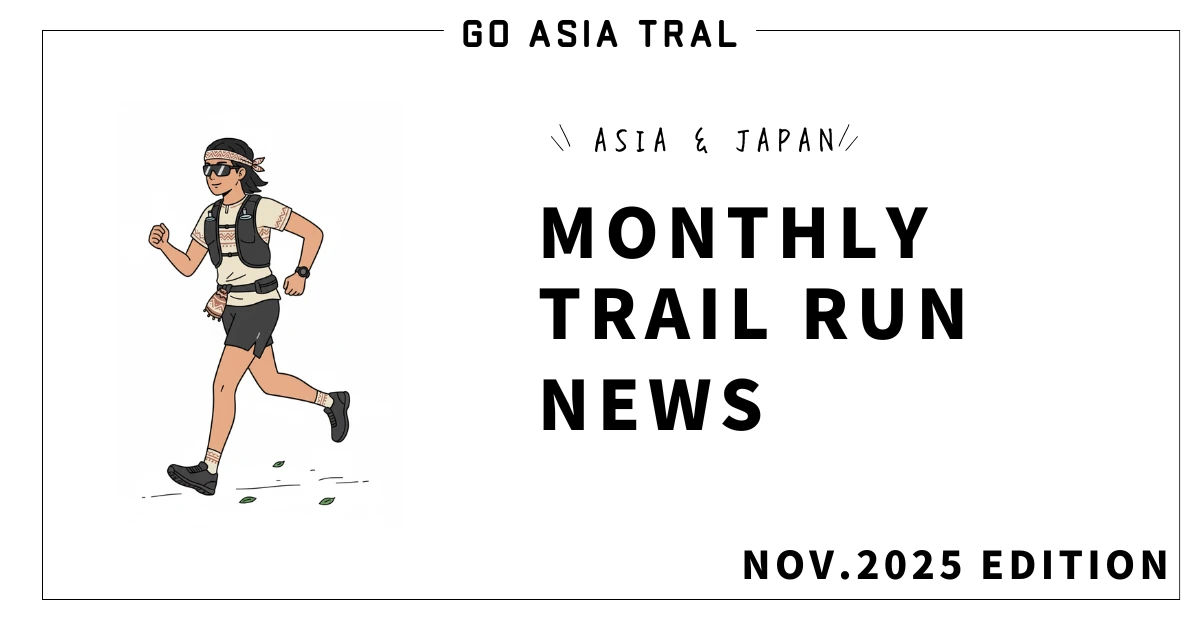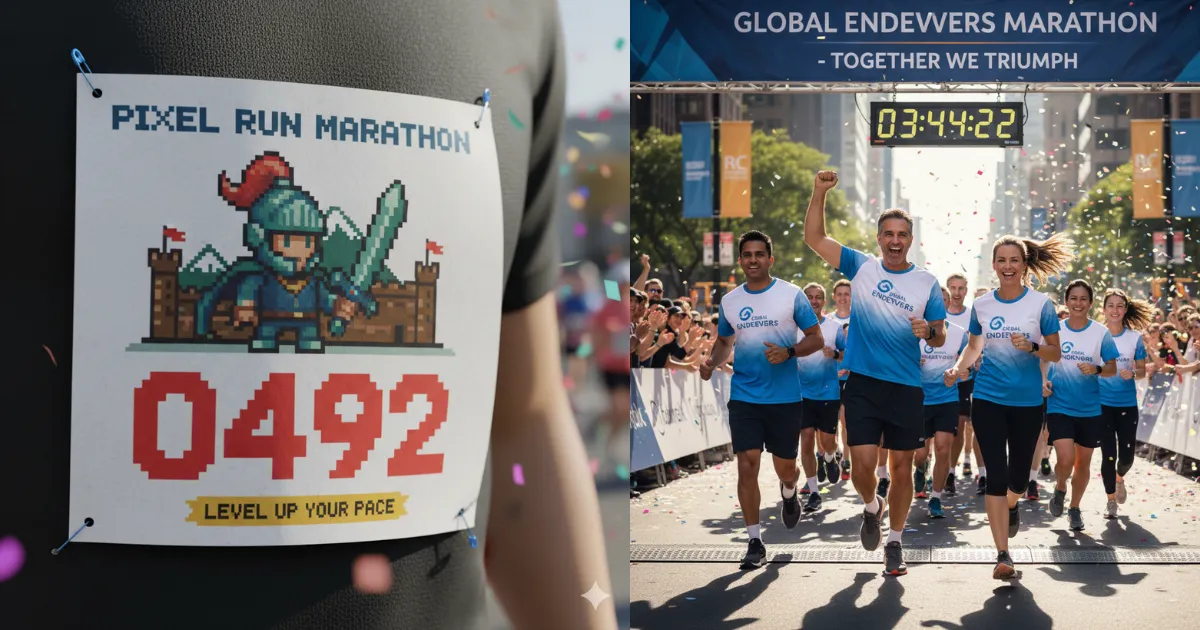This morning, we received very unfortunate news.
Update 5/24: We have added a story about a top 6 finisher who miraculously survived after being rescued by a shepherd, despite losing consciousness at 2,200m above sea level.
Twenty-one people were killed in the trail running race "Huanghe shilin baigongli yue yao yao sai" held in Gansu Province, China, from May 22 to 23. According to reports, there were abnormal weather conditions such as hail, freezing rain, and strong winds at high elevations (20-30 km). Twenty-one runners among the participants were reportedly killed. I believe that this was the largest number of casualties ever recorded in a race that I can remember.
Also among the victims was Linag Jing, one of the top Chinese trail runners who finished second in the men's race at the 2019 UTMF. I have written about him in the past on this site and he was one of the athletes I had been keeping an eye on. Also, most of the 21 who died were top Chinese runners. I am very shocked.
黄河石林越野赛21人遇难 超马领军人梁晶不幸遇难 (搜狐跑步)
Hypothermia caused by sudden weather change
According to local media and foreign media such as NHK, the cause of death is believed to be hypothermia. The weather on the day of the race was "cloudy with a maximum temperature of 19 degrees Celsius and a minimum temperature of 9 degrees Celsius. The accident occurred at an altitude of around 1,500 meters, and the temperature was estimated to have been around 10 degrees Celsius. However, a temperature of around 10 degrees Celsius would be a good climate for driving, as long as there was no wind and it was not raining. However, if the conditions were heavy rain or hail and strong winds, it would be very dangerous without rainwear or warm clothes.
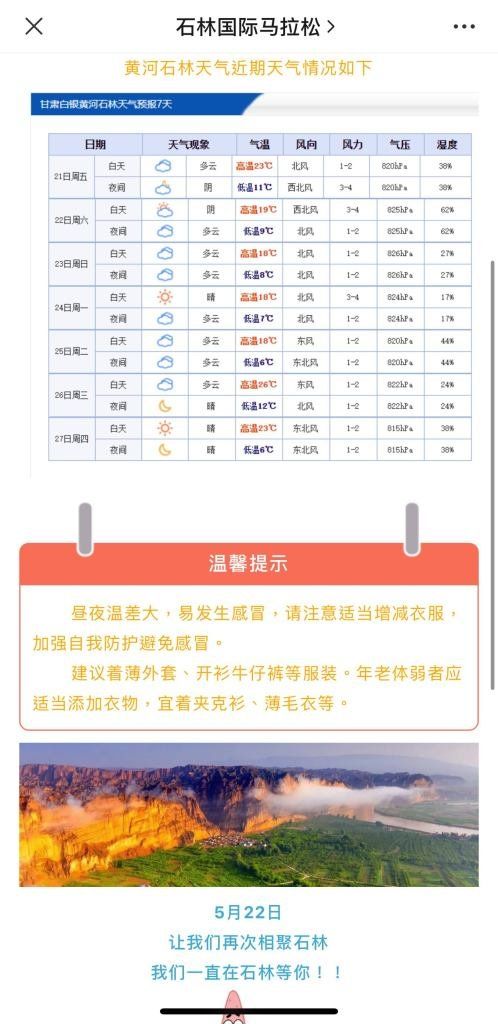
Comments from Participants
Two people who participated in the race on that day uploaded their comments on the Chinese video site (西瓜视频) about the conditions of the race on that day. (*Please note that some of the translation may be incorrect.)
Testimonials from citizen runners
- At the technical meeting (briefing?) the day before the race at the technical meeting (briefing?), I put my rainwear and warm clothes in my drop bag. It is at CP6.
- He said the weather was fine at the start of the race, but it gradually became windy and rained so hard that he could not stand. I didn't have any rainwear or warm clothes, so I got scared and turned back halfway.
- We went into a hut on the way and retreated. Then gradually more and more people came in, about 40 runners.
- We were then given leather jackets by the villagers and walked back to the CP.
- After arriving at the CP, we waited in the vehicle for about four hours before returning to the starting point.
- The reason I chose to pack light was because the weather forecast said to take precautions against heat stroke, so I dressed lightly as well. The runners around us were all wearing short sleeves.
- Also, the video of CP2 shows that it was already raining and the wind was blowing strongly.
Testimony of a runner who miraculously survived in the top 6
- At 33km, 2200m above sea level, I was unconscious for 2.5 hours.
- A shepherd man rescued me and I found myself wrapped in an emergency blanket.
- He then took me to his sheepfold and kept me warm by a fire.
- All the riders running in front of and behind me had died.
- The lead group was said to be three, including Liang Xiang.
- The wind was so strong that I could not keep my eyes open. And it was very cold and my muscles felt as if they had hardened.
- I only had a softshell as my gear and no rainwear or warm clothes. With these, I think the situation would have been better. Some of the athletes were wearing shorts and tank tops.
- The tournament should establish rules for required equipment in the future, or assign rescue teams or volunteers to the hazardous areas in this case.
- I am currently being told by my family not to run these races in the future, but I will continue to run them.
- I will learn from this accident, and I will definitely run with emergency equipment, and I will run a little slower.
- The goal is not to finish the race or get on the podium, but to get home safely.
He also testified that he ran light because he had been urged to "take precautions against heat stroke" prior to running the race. Also shown in the video is a screenshot of the SUUNTO app, which graphically shows that at the 33km point/around 2,200m above sea level, he stopped the entire time.
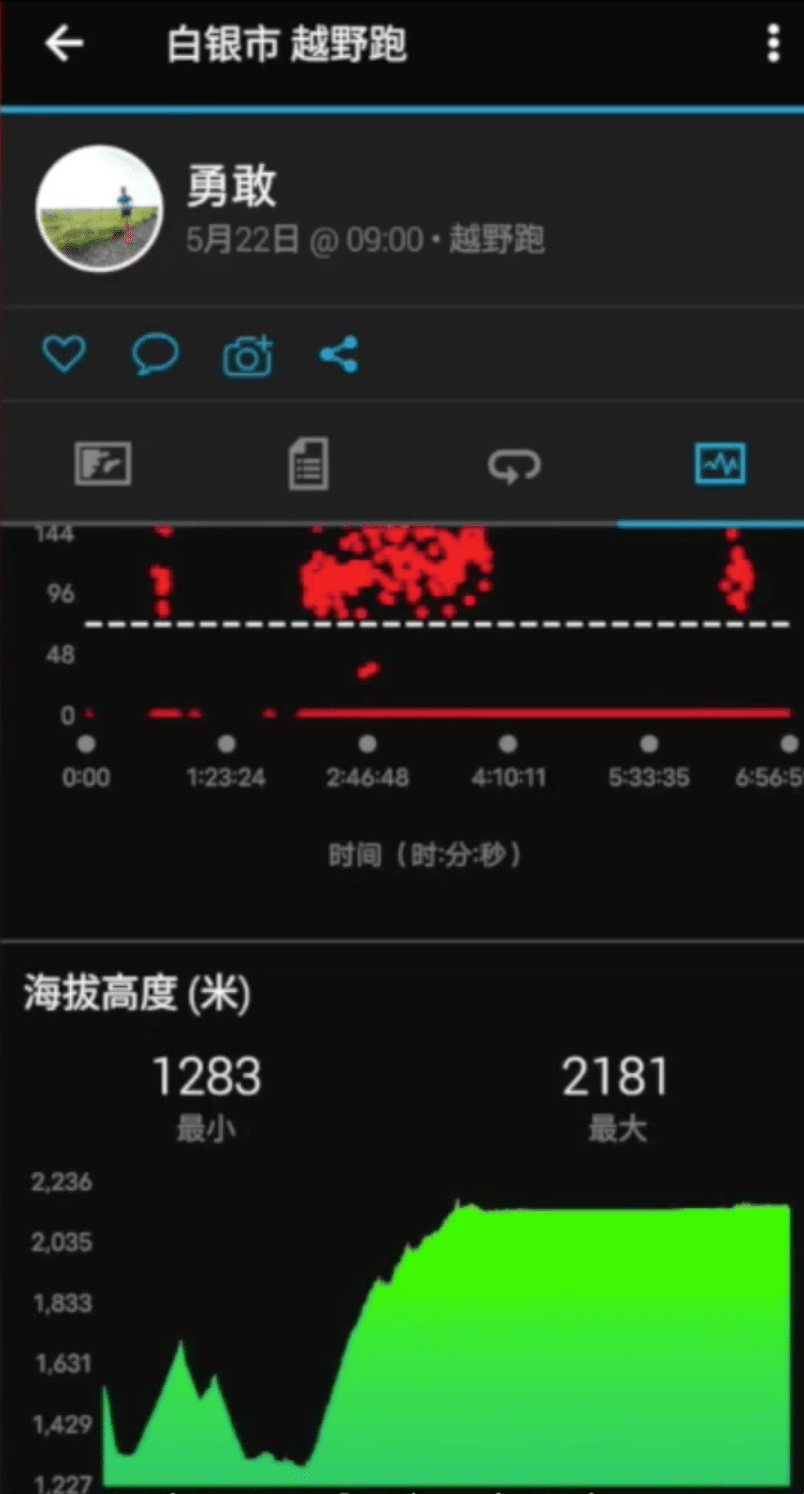
I was reminded of how scary nature can be and how important it is to have the right equipment.
In fact, when I started trail running (about 10 years ago), I once ran the Saba Kaido Mountain Marathon in Fukui - Kyoto, Japan, in a similar climate, and was caught in rain and strong winds, which resulted in my body getting cold and ultimately retiring from the race.
It was a little hot at the start, but as we entered the mountains, it began to rain and the wind was strong. Unfortunately, I did not have any rainwear with me at the time. As a result, my body got quite cold and I could not stop shivering. Fortunately, there was an aid station about 1 km ahead, where I was given a break and first aid, but with the advice of the staff, I decided to retire from the race at this point. One wrong move and I could have been in a life-threatening situation. Since then, I have always carried rainwear, a survival blanket, and warm clothes depending on the weather, both in races and in practice.
The weather in the mountains can change rapidly. I also believe that you should have enough equipment to be able to self-rescue in case something goes wrong. In Asia, many races are held in regions that are hotter than Japan, so it is easy to pack light. However, some organizers have lists of essential and recommended equipment, so you should basically have all of that. I think you should also carry additional equipment based on your own experience (if necessary, be it a cell phone battery, warmer gear, change of clothes, etc.).
In my case, I always carry rainwear, survival blanket, first aid kit, and if it is a race that runs all night, such as 100km, I carry warm clothes and so on. This is also the case in Hong Kong and Taiwan. (As well as the cold, heat stroke due to the heat can also be frightening, so it is best to make sure you have water, electrolytes, and action food for energy).
It was very sad news, but this accident made me realize once again the importance of equipment and the fear of nature.
